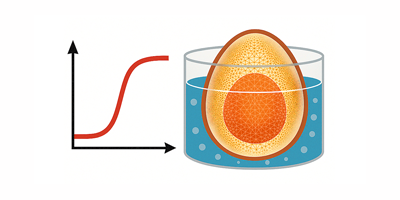Down, Set, Compute! Checking Quarterback Ratings with Mathematica
Comparing favorite teams and players is a favorite pastime for sports fans.
Most fans, including myself, understand their sports’ basic statistics—batting averages, yards per carry, and so on—but may have trouble calculating the stats. With the Super Bowl coming up in Florida this weekend, I thought it would be interesting to see what Mathematica could do to help calculate one of the most well-known and tough-to-calculate statistics of the National Football League (NFL): quarterback passer rating.
To do this, I turned to Abby Brown’s Demonstration called NFL Quarterback Passer Rating, which was created with Mathematica and can be found on the Wolfram Demonstrations Project. What’s powerful about her Demonstration is that it lets you quickly and easily compute QB passer ratings while a game is actually in progress. By adjusting the sliders to match your quarterback’s production during the game, you can instantly calculate his rating and chart his progress. The highest rating is 158.3 and the lowest rating is 0.
So as a faithful Chicago Bears and Mathematica fan, I dedicated a cold afternoon in January to watch the Bears versus the Detroit Lions and see how it works. After Chicago’s quarterback, Jay Cutler, threw his first pass of the game I thought it would be fun to be one step ahead of the announcers and calculate his passer rating. At the completion of the Bears’ first drive, resulting in a field goal, Cutler had an 87.2 passer rating, with a pass percentage of 71.4% and average of 6.14 yards per pass. At the end of the game, he posted a 122.0 passer rating, as the Bears defeated the Lions 37–23.
Another Demonstration I found interesting is called Sports Seasons Based on Score Distributions, which allows you to compare your favorite team’s success to a rival team’s. Knowing that the Bears are not going to be in the Super Bowl this year, I’m choosing not to compare their scores with their rivals’. Maybe next season.
As you can see, Mathematica is a cool and powerful tool for stats. So if you’re a sports stats nut like me, I have a fun idea for you: At this year’s Super Bowl party, instead of an extra bag of chips, grab your copy of Mathematica and create your own Demonstration for your favorite statistics. During the game, deploy your Demonstration and announce stats on the fly. I bet your friends will find you the hit of the party.




one wolrd one dream
Thank you so much
Dear Sir
I would appreciate very much if you can
help me with the below question.
Thanks very much
Lawrence
n! = 3 to the power of 2007 find n
My e-mail is smsltd@starhub.net.sg